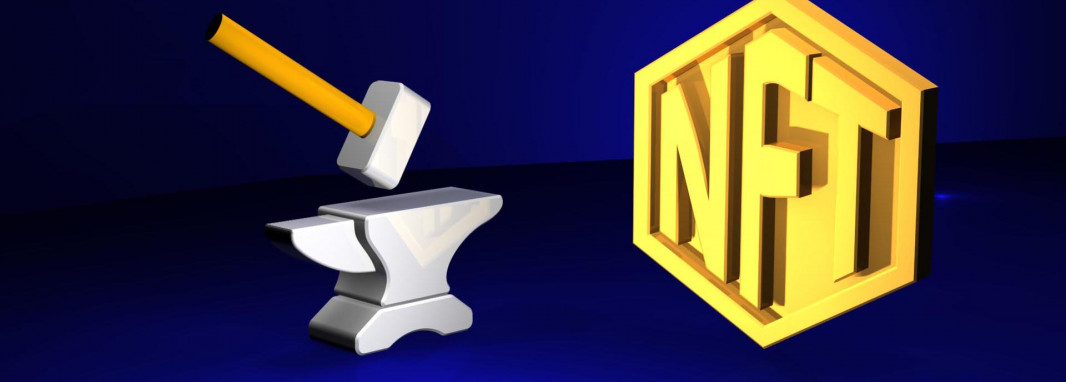With the advent of the popularity of NFTs, many NFT creation services have appeared. OpenSea, Rarible, SuperRare, Foundation - this is not a complete list of the most popular resources for NFT minting. However, in addition to the general rules of the game in the NFT market, each marketplace and each blockchain has its own ones.
We will help you with your NFT project!
How does a newbie make sense of this situation? For example, how can an artist get an NFT of his painting, and how can a musician get royalties from his songs? It would be best if you had a clean-cut scheme since you decided to make money on NFT. You have to clearly understand how to calculate the steps correctly, determine the expenses accurately, and avoid hidden fees.
Not that these commissions are hidden in the shadows. But, as they say, leave it in the most visible place if you want to hide something.
This article will discuss the fees you need to pay to mint your own NFT.
What you should know before minting your NFTs
Remember that minting is only one part of the NFT creation. Let's look at this process in more detail.
You need to take a few more steps before adding a smart contract to the network as another permanent piece of data.
NFT type
Let's say you're a musician or an artist and want to create an NFT from your work. Well, consider that the first step has already been taken. But if you just wish to create NFTs and earn money, you have to decide on the category of your NFT: individual art pieces, avatar collections, virtual land, celebrity party tickets, or anything else.
Blockchain platform
Having decided on the type of your NFT, you can proceed to the next step. Now you will need to choose a suitable blockchain. Choosing the right blockchain depends on your business plan, as every blockchain has its pros and cons. In particular, take into account the following:
- Is this blockchain popular among your target audience?
- What are the gas fees?
- How stable is it?
- Is this blockchain supported by your marketplace of choice?
Today, Ethereum is one of the most popular blockchains, but even it has its drawbacks. You can also consider Polygon, Binance Smart Chain, Solana, Hedera, Wax, and some other options. Remember that the cost of minting your NFTs will depend on the choice of blockchain.
Wallet
A crypto wallet is the next tool you cannot do without in the NFT world. Note that the wallet must be compatible with the blockchain you have already chosen for your project. Balance management and the ability to sign transactions make a crypto wallet an indispensable tool in the NFT world. MetaMask, Trust, XDEFI, and Binance Chain Wallet are some of the most famous wallets. Some marketplaces only allow specific wallets.
Marketplace
The next step towards creating NFTs is choosing a marketplace where you will mint and sell them. Today there are quite a large number of NFT marketplaces. They have their own characteristics that need to be taken into account. Today's most popular marketplaces are OpenSea, SuperRare, Rarible, Nifty Gateway, and Foundation. You can choose the marketplace that suits your requirements best, or create your own marketplace.
Account and listing fees vary from marketplace to marketplace. Consider this fact when choosing a marketplace. You can save on account fees but pay more for listing. A significant expense item is the gas fee. It also varies depending on the marketplace. Let's discuss the gas fee a little later. Therefore, the cost of minting on different marketplaces will also differ.
The marketplace choice will also be influenced by which NFTs you plan to mint, whether it’s art, music, virtual land, or video game characters. Or maybe you want to mint a collection of 10,000 pictures.
What is NFT Minting?
Before you know how much NFT minting costs, you need to understand what this process is.
Well, let's shed some light on this question.
In the case of minting coins, a coin worker turns a piece of precious or other metal into a coin that must meet specific standards that guarantee its authenticity. But if we need to mint NFTs, this means you need to convert digital content into digital assets or crypto collections and create a record in the blockchain. As a result, we will receive a digital certificate, which will grant us the ownership of a unique digital asset. Furthermore, a decentralized database or distributed ledger will keep your files safe. In other words, you simply integrate your digital content into the blockchain of your choice. As a result, no one will be able to falsify or delete your data. Then, if you wish, you can sell your NFT and get cryptocurrency. Moreover, with minting, you can call for royalty to receive money every time your NFT is sold.
As a result of minting, you get a non-fungible token with a private key and a public address. The private key will provide security, and the public address will give access. In addition, it will ensure the safe transfer of ownership from the old owner to the new one.
In other words, this is the process of integrating digital content into the blockchain, which supports the NFT standard. Prominent representatives of such blockchains are Ethereum, WAX, Flow, and Binance Smart Chain.
How much does it cost to mint an NFT?
Now let's take a closer look at what costs make up the cost of NFTs.
If we already have some cryptocurrency in the wallet, then to create our NFT, we need some more energy. So, the first expense item is Gas fees. It is one of the most complicated payments that can easily confuse beginners. The NFT minting process involves the execution of transactions on the blockchain. In essence, the gas fee is the payment for the energy that the processor consumes when we record data in the blockchain's digital ledger. The more complex the transaction, the more power it consumes, and the higher the gas fee. And it means that for different NFTs, gas payments will be different.
Let's take a closer look at this using the Ethereum blockchain as an example. Gas fees are expressed in gwei. A unit of gwei is equivalent to 1 nanoether, or 0.000000001 ETH.
The price of gas is constantly changing. It depends on the number of concurrent users, day of the week and the time of day. The gas cost is cheaper on weekends and at night than on weekdays and working hours. Therefore, we can only guess how much the gas will cost until we complete the transaction.
There are options to reduce the cost of gas. For example, choose a blockchain other than Ethereum. You can mint on Polygon or WAX. Or choose a slower minting option. Or, as we mentioned earlier, you can mint NFTs at a moment when the price per bit of gas is at its lowest.
 Account fees. If you do not yet have your own NFT Marketplace, you will have to create your account on an existing one. This process also costs money, and the account fee will depend on which marketplace you choose.
Account fees. If you do not yet have your own NFT Marketplace, you will have to create your account on an existing one. This process also costs money, and the account fee will depend on which marketplace you choose.
Listing fees. Since you plan to make money on NFT, you must provide for its sale. To do this, you will need to put your NFT up for sale. For this, the marketplace will take a commission from you.
The NFT marketplace is somewhat similar to a traditional marketplace with goods. You will find many similarities if you have already sold some goods on eBay, Amazon, or AliExpress.
You can work with the marketplace on a prepaid basis. First, you pay the marketplace to create and promote NFTs, as well as the profit that the marketplace wants to get. After that, you can mint your NFT and put it up for sale. Of course, the commissions for different marketplaces are different, but in any case, when you pay upfront for work with NFTs, the commission will be minimal. Also, in this case, you will clearly understand how much you need to pay.
There is another payment option if you don't want to spend money immediately before your NFT is sold. Instead, you can pay after someone buys your NFT. It will allow you to avoid unnecessary expenses until you receive your profit. However, keep in mind that in this case, the marketplace commission will be much higher than in the previous scenario. Also, remember that each marketplace has its own terms and conditions and prices. So if you decide to use the Per sale scheme, you should get a clear answer on how much you will have to pay after your NFT is sold. Otherwise, your NFT may bring you less money than you spend on it.
Another payment option for NFT marketplace services is a subscription, similar to regular marketplaces on the Internet. When you subscribe to the marketplace of your choice, you pay a monthly fee. This option allows you to reduce your NFT minting costs significantly. However, the conditions for subscribing to each marketplace are different. Learning these terms will help you plan your NFT business properly.
How much does it cost to mint an NFT on Ethereum?
Probably the most popular blockchain today is Ethereum. Despite the high cost of transactions, Ethereum has a massive community of users and developers.
Ethereum uses PoW (Proof of Work) consensus, which requires a vast amount of resources and electrical energy.
On average, the cost of minting NFTs on this blockchain ranges from $50 to $400. Although even $400 is far from the limit. Such a significant difference is due to fluctuations in gas prices. The average Gas Fee is $150. As for crypto wallets, along with free wallets, there are also paid ones. Opening such an account can cost $70 - $200.
Who knows, perhaps with the release of the Ethereum 2.0 or Eth2 version, the cost of transactions will become much lower, which will allow Ethereum to accept new followers into its community.
How much does it cost to mint an NFT on Solana?
Solana is the fastest blockchain today. It has its own consensus called PoH (Proof of History), which allows the processing of 65,000 transactions per second. Gas fee is $0.00025. Of course, it is nothing compared to the cost of gas on Ethereum.
Solana uses its own currency called SOL, which you will need to mint your NFT. The average mint value of an NFT on Solana is $1.5.
1 SOL = 0.26 USD at the time of writing.
Solana has become widespread among NFT game developers due to its ability to conduct many transactions at high speed.
By the way, DeFi and Web3, as well as thousands of other projects, use Solana. So, Solana has already become an entire ecosystem in the crypto space.
How much does it cost to mint an NFT on Polygon?
Polygon is a blockchain technology created to solve the scaling problem that Ethereum has. Polygon shares technological similarities with the Ethereum Internet network. At the same time, Polygon provides good scalability, high speed, and reliable security.
Gas Fees is $0.002. Polygon uses the PoS consensus (Proof of Stake), which avoids the computational cost. If your project involves a high frequency and low cost of transactions, then Polygon will be a good choice in this case. For example, if you plan to mint a collection of several thousand NFTs.
Polygon also allows the "lazy minting" option. We'll look at this possibility in more detail below. In the meantime, let's just say that this will enable you to mint NFTs at no initial cost.
How much does it cost to mint an NFT on Flow?
Flow has the same consensus as Polygon, resulting in a low gas cost of $0.014. Therefore, this blockchain is suitable for creating NFT collections and NFT games.
How much does it cost to mint an NFT on Cardano?
Cardano has consensus PoS like Flow and Polygon, but Gas Fees are $0.4.
Suppose you have chosen the Сardano blockchain and CNFT.IO marketplace for your project. In that case, minting NFT can cost you 6.5 ADA at the time of this article's publication, which is approximately 3.37US dollars. When you sell your NFT, 2.5% of the sale price goes to the marketplace. Therefore, you will need a supply of currency in your wallet as collateral to create a smart contract.
How much does it cost to mint an NFT on Wax?
Gas fees and commissions are zero. It is what makes WAX stand out from other blockchains. The cost of minting NFTs on WAX is only a few cents. Moreover, this blockchain is fully compatible with EOS.
![]() Can you mint an NFT for free?
Can you mint an NFT for free?
What if you are not a shrewd businessman or wealthy investor but want to make money on NFTs? Let's say you're a musician or artist who has already invested enough in your music or paintings and doesn't have solid start-up capital, but you want to sell NFTs of your work. Marketplaces offer you solutions that may be of interest to you. These options allow you to save on minting or completely mint your NFTs for free.
As we mentioned above, one of the options for (almost) free NFT minting is to use the Polygon blockchain.
One of the most famous NFT marketplaces, Rarible, has provided an option that will allow you to not pay for gas and not to create a smart contract. This issue is solved thanks to the so-called "lazy minting." The fact is that Rarible eliminated unnecessary transactions and the need for Ethereum. Furthermore, it allows you to avoid any upfront costs.
So how does "lazy minting" work? Let's take a closer look at this point. Very often, users mint their NFTs on Ethereum. As you already know, Ethereum asks for a high commission for gas. Moreover, it requires this payment immediately, which is a very high cost. But how is this option achieved? In this case, when creating an NFT, you use your wallet to authorize the minting, ensuring your ownership rights. The data stays in IPFS (a peer-to-peer network that allows information to be distributed worldwide), and the minting process is delayed until someone buys your NFT. As soon as someone buys your NFT, minting begins. Moreover, it is not you who pays for the minting, but the buyer. This way, you mint your NFT for free.
We can highlight the Mintable platform of the free ways to mint NFTs. This platform can be exciting if you are looking for the cheapest NFT minting options. It allows aspiring NFT creators to create and sell their work for free. Among the shortcomings of this platform, one can single out the complex and lengthy registration process and the inconvenience of working with the site. Nevertheless, the ability to create NFTs for free is a definite pro.
With free minting, you need to understand that there's no such thing as a free lunch. OpenSea allows users to list their NFTs for free but takes 2.5% of every final sale price. For comparison, another marketplace SuperRare charges 3% of all fees paid by buyers of an NFT, while Nifty Gateway asks for 5% and 30 cents of every secondary sale. In the end, someone has to pay to cover the costs of the marketplace for minting your NFT. Consider whether your customers are willing to spend their money on all these commissions.
How much does it cost to start an NFT collection?
To understand how much it will cost to start an NFT collection, you need to consider all the points we have identified for minting one NFT.
To date, the cost of minting one NFT can be much lower than $1 (in a case of a non-Ethereum blockchain). However, don’t forget it is influenced by several factors ranging from blockchain and gas fees to the day of the week and time of day. So if you want to launch an NFT collection, for example, in 10,000 pieces, their cost can range from $200 to $500,000+ dollars.
How much does it cost to mint an NFT on OpenSea?
One of the most popular marketplaces today is OpenSea. A simple and intuitive interface and the ability to work with different blockchains make this platform very popular. To sign up and browse offerings, no expenses are required. Although if you want to list your first NFT, you will have to pay from $70 to $400. It depends on the supply and demand of transactions required for minting. In the case of using Ethereum, one transaction can cost $50 and another $350.
It will give you great opportunities if you want to run an NFT collection on OpenSea. For example, you want to receive royalties from your NFTs. OpenSea allows you to make such a move. In the Royalties column, you indicate the percentage you want to get for each transaction of your NFT. In addition, when choosing a blockchain, you can select Polygon. It will allow you to avoid high gas costs and unlock the option of lazy minting.
Conclusion
In view of the above, the situation in the NFT space is constantly changing. To properly organize an NFT business, hiring an NFT development company is advisable. A good team will help you avoid unnecessary mistakes at the planning stage. This will allow you to reduce your expenses significantly. The professional team of Zfort Group is your forward thinking partner. Our experts are ready to support your project at any stage.
We will help you with your NFT project!







